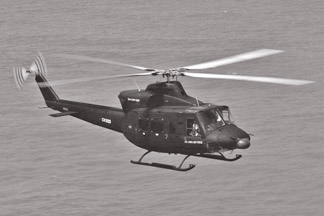|
Celebrates 60th anniversary today:
SLAF - highly professional outfit
Played major role in defeating terrorism:
Sandasen MARASINGHE
The 60th anniversary of the Sri Lanka Air Force (SLAF) falls on March
02, 2011. The Sri Lanka Air Force which was initiated by the British 60
years ago has turned out to be a highly professional outfit with its
servicemen and playing a pivotal and indispensable role in defeating
LTTE terrorism on May 19, 2009 along with the other forces of Sri Lanka
 This is how the SLAF developed to its present standard. This is how the SLAF developed to its present standard.
Royal Air Force and World War II
The precursor of Sri Lankan Air Force were the elements of the
British Royal Air Force based in Sri Lanka during the World War II.
Japan entered World War II with the bombing of the Pearl Harbour on
December 7, 1941. The Japanese fleet with a force of about 125 aircraft
attacked strategic targets in Colombo on April 5, 1942 and the China Bay
airfield in Trincomalee on April 8, 1942.
Between the late 1930s and the early 1950s a great deal of military
flying activities took place in and from Sri Lanka. These activities
were conducted by the Royal Air Force (RAF) and the Royal Navy’s Fleet
Air Arm (FAA). RAF Airfields were established at Colombo Racecourse,
Ratmalana, Katukurunda, Negombo, China Bay, Minneriya, Vavuniya,
Kankesanthurai, Sigiriya, Dambulla, Mawanella, Koggala, Kalametiya and
Puttalam.
RCyAF pilots
Later on the Royal Ceylon Air Force was born on March 2, 1951 with a
Regular Air Force, a Regular Air Force Reserve, a Volunteer Air Force
and a Volunteer Air Force Reserve becoming the youngest of the Defence
Services of Ceylon. Cadets D De S Seneviratne and Paddy Mendis were
recruited to the RCyAF on August 8, 1951.
|

B412 |

BEECH200 |
When at last training got under way at Katunayake, the first batch of
Officer Cadets were Ivor De Abrew, L B Tissa, R Varatharasa, C
Chelvarajan, Mike Phoebus, D Nicolle, Dick C Perera, R Vivekananthan,
Harry Goonetileke and Jayasena. An Air Force HQ Unit was formed in 1952
and was located at McCallum Road.
At inception, the RCyAF owned no aircraft. The RCyAF’s first trainer,
the Chipmunk arrived in 1950 and another two batches joined the fleet in
1952 and 1953. The aircraft were assembled at Katunayake, under the
guidance of RAF Engineers and were first flown in February 1951.
Many an RCyAF Cadet pilot found the next batch of Balliols brutes to
fly yet a few of those Cadets like Paddy Mendis, Harry Goonetileke and
Dick Perera have admitted that of all the aircraft they had flown, the
most challenging and rewarding to fly, were the Balliols.
The RCyAF took delivery of Merlin-engined Boulton Paul Balliol
aircraft in 1955, heralding the commencement of advanced flying training
activities, long delayed up to that juncture. But the prowess of our
young RCyAF pilots did Ceylon proud in the UK. Squadron Leader S V
Mahendra Situnayake became the second Asian pilot to win the Groves
Memorial Prize for Flying and Airmanship at Cranwell while Squadron
Leader J E M Nihal Ratnayake became the first Asian pilot to win the
Hicks Memorial Prize for Aerobatics, also at Cranwell.
A De Havilland Dove aircraft, two Westland S 51 helicopters, commonly
known as the Dragonfly and four Prestwick single engine Pioneer aircraft
joined the fleet in 1955.
|

AN32 |
The RCyAF’s first major tragedy took place in 1958 in the form of an
air accident. It involved a Dove aircraft from No 2 Squadron piloted by
Flt Lt Varatharasa which crashed on take-off into the oil storage tanks
at China Bay airfield in the Trincomalee area, killing all five persons
on board. In addition to the pilot, there were Flt Lt Shibley and Lt
Peiris and an Engineering Officer of the British Army, Major Hacker and
Sergeant Guy.
The Civil side of things
The first signs of civil unrest in Ceylon was witnessed in 1958. The
RCyAF was called upon to assist the other armed services in maintaining
law and order.
Air Vice Marshal John Lindsay Barker relinquished command of the
RCyAF in 1962 and bade Ceylon farewell and Air Commodore E Rohan
Amarasekera DFC took over it as the first Ceylonese Commander of the
RCyAF.
Air Cdre Amarasekera introduced the official language, Sinhala, into
the day to day working of the Force.
RCyAF Trade Training School, Katunayake, came into being to provide
formal training for Officers and Aircraftsmen in their branch or trade
on January 15,1971.
The No 1 Flying Training School which went to China Bay in 1963, was
re-established with effect from January 15, 1971 to undertake ab-initio
and advanced flying training of students to wings standard. It also
handled the training of qualified pilots to Flying Instructor category
and the standardisation of Flying Instructors and Pilots of the RCyAF.
The RCyAF at the outbreak of the Southern-led insurgency in the
island in 1971 which was the first serious internal threat faced by
Ceylon, five Jet Provosts were flown to Katunayake from China Bay
attacking a target on the way on April 9. With the hurried purchase of
60 lb rockets, the Jet Provosts became an effective weapon against
insurgent concentrations.
To be continued |



